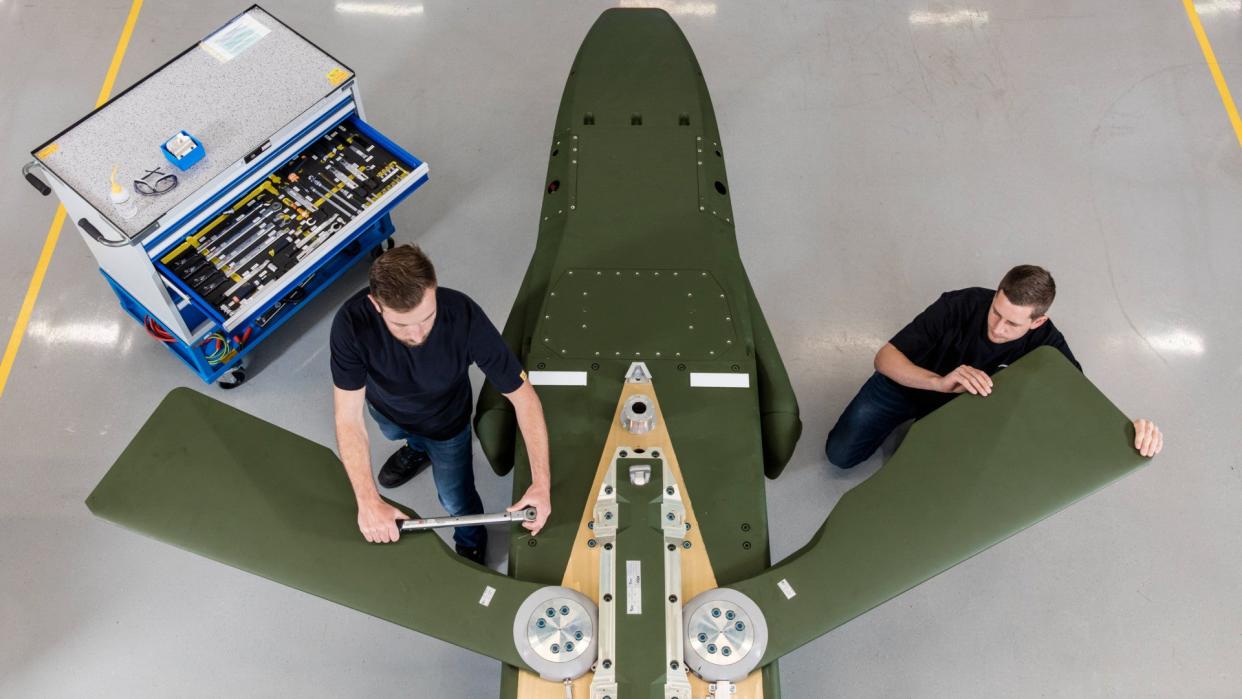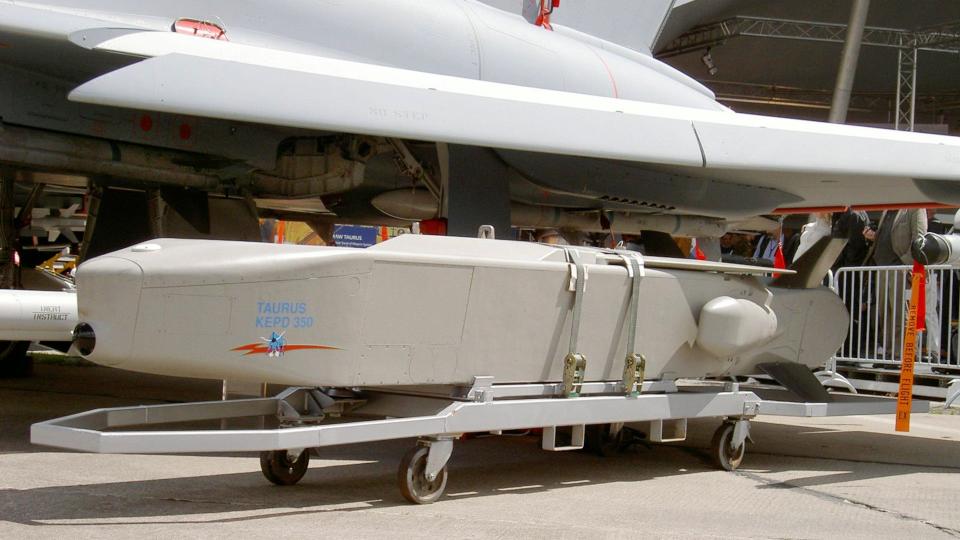Adding Taurus Cruise Missiles To Ukraine's Su-24s Would Take Six Months

More than five months after the possibility of Germany supplying air-launched Taurus KEPD 350 cruise missiles to Ukraine was first put forward, authorities in Berlin have yet to move forward with such a plan. However, if or when that decision is made, it will take around six more months to modify Ukrainian Su-24 Fencer swing-wing strike jets to carry them and train the crews of those aircraft to employ them, according to a report based on comments from the head of the company responsible for manufacturing the missiles.
Janes reported on the comments from Joachim Knopf, who is CEO of Taurus Systems, yesterday. Taurus Systems is a joint venture between MBDA Deutschland, the German arm of European missile consortium MBDA, and Saab Bofors Dynamics in Sweden, which is now a division of U.K.-headquartered BAE Systems. Knopf's remarks came while speaking to journalists alongside MBDA Deutschland's managing director Thomas Gottschild during a recent media engagement that the company hosted.

The Taurus KEPD 350, which first entered German service in 2005, has a stated range of around 300 miles. The missile carries a 1,000-pound-class two-stage warhead called MEPHISTO (Multi-Effect Penetrator Highly Sophisticated and Target Optimised) that is designed to allow it to punch deep inside even hardened targets. The warhead reportedly has a programmable delay setting that can be so finely tuned that the second stage will detonate only after it reaches a specific floor in a building.
https://www.youtube.com/watch?v=TYw5-UDeMyo
The Taurus missile's guidance package combines a GPS-assisted inertial navigation system (INS) image-based and terrain reference sensors. "This fail-safe concept enables the system to maintain its planned flight path even without permanent GPS availability," according to the manufacturer.
Knopf said that the process of integrating the Taurus KEPD 350 onto the Su-24 "would take a couple of months," according to Janes. After that, "training crews for its use would take three or four months."
Janes reported that these two phases would be sequential, resulting in at least six months of total time before Ukrainian forces would be ready to employ Taurus.
At least a portion of Ukraine's Soviet-era Su-24 fleet has already been modified to be able to employ British-supplied Storm Shadow cruise missiles, as well as virtually identical SCALP-EGs from France. The Fencer would therefore be a logical choice as the carrier for Taurus cruise missiles not just due to its core design, but also because of the work that already has to have occurred to add these other Western cruise missiles to its arsenal.
https://twitter.com/Osinttechnical/status/1688242802713391104
The War Zone has repeatedly highlighted in the past that if the integration of any Western weapons onto any of Ukraine's Soviet-era combat jets involves adding new common data buses onto those aircraft that it could help streamline the process of integrating other stores down the line.
A bigger issue when it comes to the possibility of Ukraine getting Taurus KEPD 350s is that the missiles are out of production. The German military, or other users (Taurus cruise missiles are also in service in South Korea and Spain), could transfer examples to the Ukrainian Air Force from existing stocks, but there would be no immediate option to replenish those inventories.
https://www.youtube.com/watch?v=MddqW9Qj4GE
MBDA Deutschland's official account on X, formerly Twitter, responded to a discussion about all of this just today by saying "the production of Taurus can be restarted in the short term," according to a machine translation of the German-language post. As part of this process, it could be possible to "integrate new technical advances" so "that the client's capabilities are retained for the next decades" the post added, but did not elaborate on what that might mean more specifically.
https://twitter.com/MBDADeutschland/status/1720038473644572881?s=20
Taurus Systems' Knopf had previously offered a more specific timeline for getting production of the missiles up and running again, saying it would take at least a year, if not longer, according to Janes. He specifically cited potential long lead times to acquire critical "electronic components and explosives."
Janes also reported that MBDA Deutschland managing director Gottschild said that any decision to restart production of the Taurus KEPD 350 would be dependent on the German government first approving transfers of those missiles to Ukraine.
There is also a political dimension to all of this, as well. The German government has been accused in the past of dragging its feet when it comes to certain kinds of military aid for Ukraine in part over concerns about prompting new levels of escalation from Russia or possible spillover of the conflict. Just last month, German Chancellor Olaf Scholz defended his ongoing reticence to approve the transfer of Taurus cruise missiles to Ukraine because of fears about the "escalation of the war."
For Ukraine, deliveries of Taurus KEPD 350s would mean another valuable stream of longer-range stand-off weapons able to hit Russian forces virtually anywhere inside the country, and potentially targets in Russia proper. With their MEPHISTO warheads, they could be particularly useful for striking high-value command and control facilities and other hardened targets, as well as bridges.
https://twitter.com/Aviation_Intel/status/1680817942064435201?s=20
The Ukrainian Air Force has already been making good use of its Storm Shadow and SCALP-EG cruise missiles, the former of which have BROACH penetrating warheads that are similar in form and function to the Taurus' MEPHISTO.
https://twitter.com/GuyPlopsky/status/1656623505528733696
Storm Shadow and/or SCALP-EG have been notably credited with severely damaging a Russian Navy Kilo class submarine and a Ropucha class landing ship in a strike on the naval base in Sevastopol on the occupied Crimean Peninsula in September. Later that month, another wave of these air-launched cruise missiles slammed into other targets in Sevastopol, including the Russian Navy's Black Sea Fleet headquarters.
https://twitter.com/CITeam_en/status/1703736274484334701 https://twitter.com/clashreport/status/1705170102285381735?s=20
Ukraine's ability to conduct stand-off strikes across occupied areas of Ukraine, as well as on targets inside Russia, could become even more important if fighting along the front lines devolves into a stalemate. This is something Ukrainian officials are now talking about publicly.
In an interview with The Economist published yesterday, Valerii Zaluzhnyi, the Commander-in-Chief of the Armed Forces of Ukraine, said that "just like in the first world war we have reached the level of technology that puts us into a stalemate." He argued that new decisive technological advantages for the Ukrainian military would be necessary to "break the deadlock."
Ukraine's Ambassador to the United States Oksana Markarova made a similar argument while speaking at the 2023 Military Reporters and Editors conference in Washington, D.C. last week. She specifically highlighted the U.S. government's recent decision to send Army Tactical Missile System (ATACMS) short-range ballistic missiles, and the need still for longer-range versions of these weapons, as an example of what her country needs to succeed. The first-ever Ukrainian ATACMS strike last month caused significant destruction at two Russian air bases, damaging or destroying as many as 16 helicopters and other materiel.
https://twitter.com/JosephHDempsey/status/1719266708265812092
It still remains to be when or if German authorities will allow Taurus KEPD 350 cruise missiles to go to Ukraine. Whenever that approval comes, it will still take at least around half a year before those weapons reach the battlefield.
Contact the author: joe@thedrive.com

